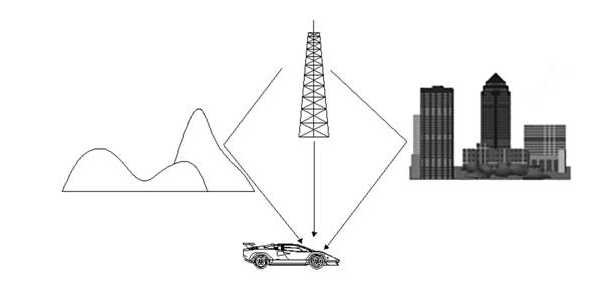Antenna attenuation process
With the development of DVB-T in outdoor broadcasting fields such as mobile TV, car TV, building TV, subway TV, etc., small range fading such as multipath fading and Doppler frequency shift is inevitable in these reception ranges. Solving these fading and interference has become a highly concerned issue. In order to address fading and improve the signal quality of digital television broadcasting mobile reception, various measures have been taken on the receiving equipment, such as channel decoding and error correction technology, anti fading reception technology, etc. However, dual/multi antenna diversity reception technology is the most obvious and effective solution.
Multipath Signal Fading and Doppler Effect
What is fading? Simply put, signal level changes over time due to various factors, and fading is divided into slow fading and fast fading. There are many reasons for fading, and wireless ground transmission signals are easily affected by weather conditions such as clouds and rain caused by obstacles such as high-rise buildings and mountainous terrain, all of which can lead to fading. The two common types of fading in DVB-T mobile reception are multipath signal fading and Doppler frequency shift.

The antenna undergoes a multipath fading process. When the local surface wave signal is obstructed by multiple obstacles such as tall buildings, hills, and moving vehicles in the transmission path, it will reflect or scatter, forming a multi-channel signal that reaches the receiving antenna. Due to different times and phases of arrival at the receiving antenna, different signals with opposite phases weaken each other due to superposition, resulting in signal fading.
Another unavoidable issue in the mobile reception process is the Doppler effect. If a signal propagates in the form of waves, the frequency of the signal received by the receiver will change due to relative motion between the receiver and the generator, which is called the Doppler effect. This is a characteristic of any wave process, and so is electromagnetic waves. If the signal received by the receiver is relative to the transmitter, the Doppler effect will also occur, depending on the direction and speed of the receiver's movement relative to the transmitter (as shown in Figure 2). When the receiver and transmitter move in opposite directions, the frequency of the received signal is higher than the transmission frequency. On the contrary, when they move in opposite directions, the frequency of the received signal is lower than the transmission frequency, This frequency change, also known as Doppler shift, produces fading that makes it difficult for the receiver to accurately solve the signal.
The small-scale fading caused by multipath fading and Doppler frequency shift has a strong destructive effect on the received signal of mobile receiving devices, which can cause significant inter symbol interference and frequency vector reduction. Therefore, when receiving, it is required that the signal power is strong enough or the receiver sensitivity is high enough. The fading caused by multi-path fading and Doppler frequency shift belongs to fast fading in a small range. Theory and experiment show that the amplitude of fast fading obeys Rayleigh distribution, and the phase obeys uniform distribution. Diversity reception is an effective way to overcome the influence of fast fading.





